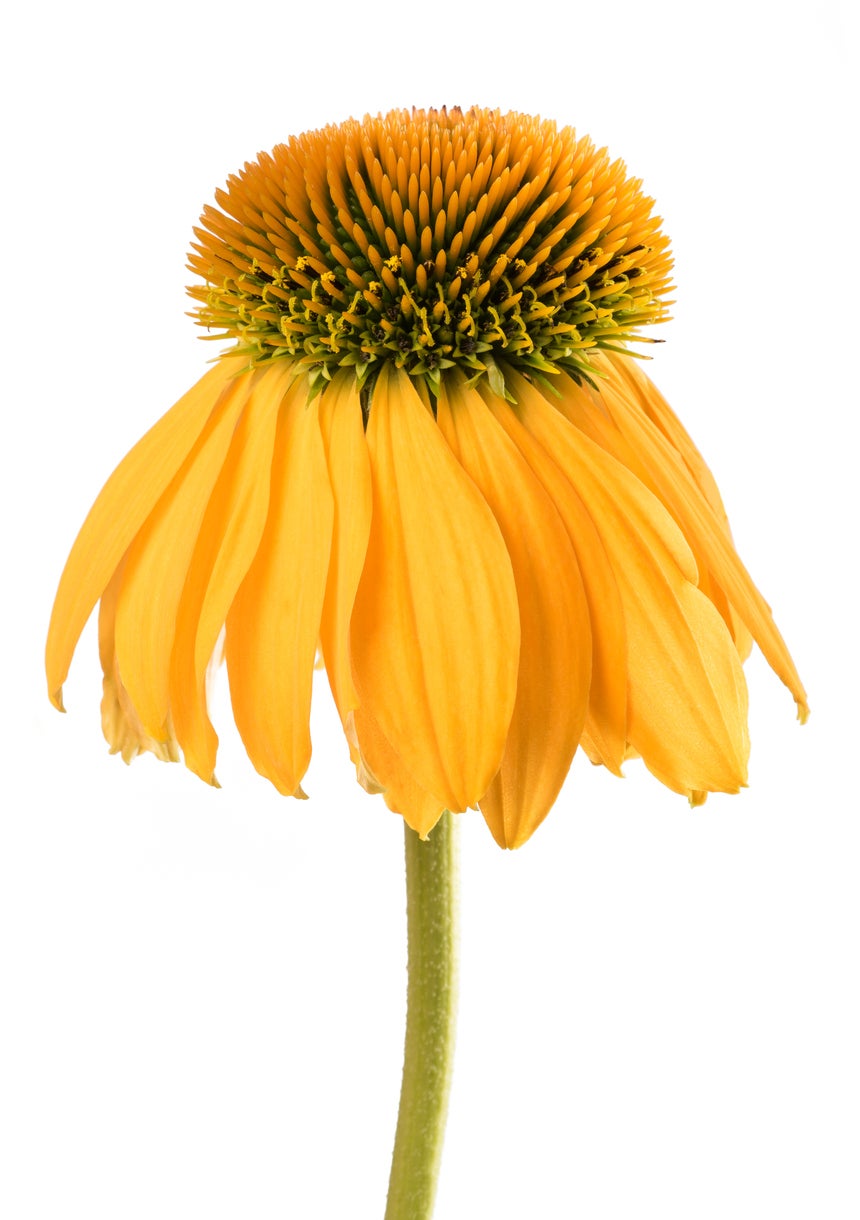Yellow Echinacea Care – Learn About Growing Yellow Coneflowers


Native to North America, coneflower, or echinacea plants, have been cultivated as beautiful and useful garden plants throughout America and Europe since the 1700s. Even before this, however, echinacea plants were highly revered by Native Americans as an important herb. In fact, echinacea was the number one “go-to” healing plant of the Plains Indians. It was used to treat coughs, colds, sore throats, toothaches, yeast infections, skin ailments, insect and snake bites, relieve depression, treat bacterial and viral infections, and as a general pain reliever. Echinacea flowers were also used in dying textiles to create rich green and brown colors.
Of the approximately ten species of echinacea that grow natively throughout the United States and into Canada, most are easily recognizable, bearing the telltale, prominent, brown to black, seed-producing center cone with bright purple to pink petals that arch down from the center. However, one native variety, known as Echinacea paradoxa, stands out from other native echinacea plants. The “paradox” indicated in this variety’s name comes from the fact that it is the only native echinacea to produce yellow petals rather than the traditional pink to purple colored petals of the most naturally occurring species.
About Yellow Coneflowers
Echinacea paradoxa is commonly known as yellow echinacea or yellow coneflower. While today you can visit any garden center and pick up coneflower plants that produce yellow, red, lime green, white, orange, and many other colored petals, these varieties are hybrids, and most naturally occurring echinacea plants bear purple to pink petals.
The exception is Echinacea paradoxa, which bears yellow petals atop stiff, sturdy 24- to 36-inch (61-91.5 cm.) tall stems. Yellow coneflower grows as a hardy perennial in U.S. zones 3-9 but commonly occurs naturally in regions of the Ozarks, such as Missouri, Arkansas, Oklahoma, and Texas. In the right conditions, they can naturalize into large clumps or colonies of yellow coneflower plants. Their seeds will also self-sow readily in ideal locations.
How to Grow Yellow Coneflower
The ideal conditions for growing yellow coneflowers include full sun to part shade and alkaline soil. Yellow coneflower plants are not too picky when it comes to soil moisture. Their deep taproot allows them to tolerate wet or dry soils, pulling up water, oxygen, and nutrients that are hidden deep within the soil, making them excellent additions to native prairie beds, wildflower bioswales, and rain gardens. However, the soil pH may need to be adjusted if it is naturally acidic.
Not only is yellow echinacea tolerant of challenging soil conditions, but they are also rarely bothered by deer or rabbits. Plant yellow coneflower plants as natural borders to deter animal and rodent pests.
As native wildflowers, growing yellow coneflowers in U.S. gardens benefits native pollinators. The plants bloom from early summer through fall, providing reliable nectar for many native bees and butterflies. When spent blooms are allowed to go to seed, they provide food for native songbirds, such as goldfinches and cardinals.
Sign up for the Gardening Know How newsletter today and receive a free copy of our e-book "How to Grow Delicious Tomatoes".
Yellow echinacea care is minimal and self-sowing can be kept in check with regular deadheading. Their blooms make excellent, long-lasting cut flowers too.

Darcy is a former contributor to Gardening Know How. She is a professional landscape designer and gardening writer with experience in plant sales. An avid gardener, Darcy has a passion for sharing practical tips to help others grow.